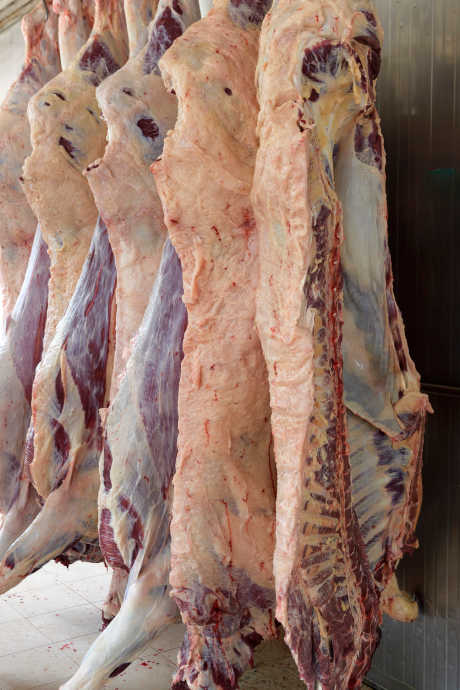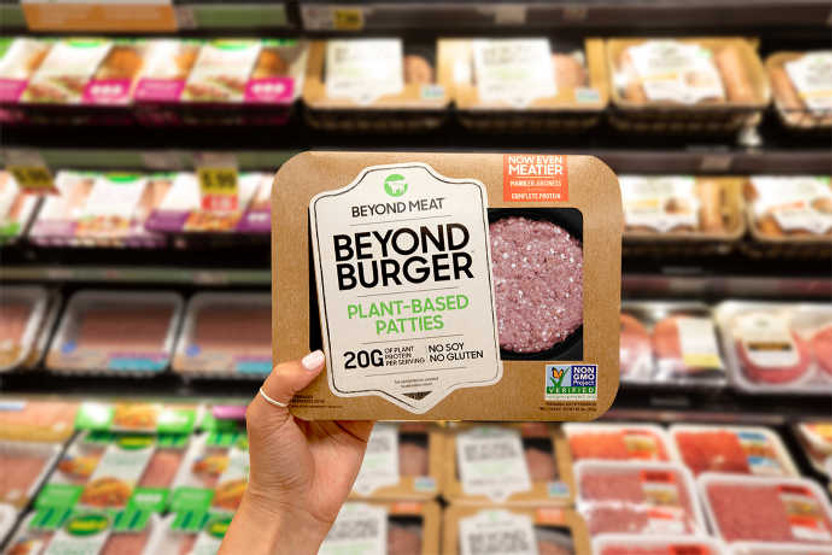Yes, Please or We'll Pass: Beyond Burgers
Posted by Julie on Jul 24th 2019
Our latest edition of “Yes, Please or We’ll Pass” is perfect for grilling season. We’ll explore the hot new meat-free burger that “looks, cooks, and satisfies like beef.” That’s how the makers of Beyond Burgers are billing their plant-based vegan alternative to red meat. Does it live up to the hype? Keep reading to find out what’s in these patties and why you might want to try them (or why not).
The Basics of Beyond Burgers
We’ve written before about vegetarian burgers and the ingredients you can use to approximate a ground beef patty. Beyond Burgers aren’t a concoction you can assemble at home. Instead, Beyond Meat -- the company that makes plant-based ground beef and sausage -- synthesizes their products from components found in both animals and plants.
Beyond Meat analyzed what meat is really made of: amino acids, lipids, trace minerals, vitamins, and water. From there, they identified plant-based substitutes and developed processes to make those substitutes behave like meat in terms of texture and flavor. What are those substitutes? The ingredient list goes on for a while, but the top four are water, pea protein isolate, expeller-pressed canola oil, and refined coconut oil.
Sounds unappetizing? Consider what’s in a hot dog, and the process by which it’s made. You’d be hard-pressed to assemble one of those at home too, and the ingredients are similarly off-putting.
Why Eat Beyond Burgers (or Not)?
If Beyond Burgers seem unnatural, you might be wondering why anyone would want to eat them. Beyond Meat developed their products to help address several issues related to the production and consumption of meat. It’s already well-known that eating large quantities of red meat has been linked to health concerns. But raising livestock in vast numbers is also detrimental to the environment, as discussed in thousands of scholarly articles. Beyond Meat understands why many of us love a good burger; their goal is to help satisfy that craving in a way that’s healthier for our bodies and the environment.

While raising and slaughtering fewer animals will lessen the impact on the environment, the jury is still out where it comes to meat substitutes and our health. Beyond Burgers may not affect our bodies as red meat does, but dietitians caution that we shouldn’t think of them as health food. They’re highly processed, meaning the final product doesn’t bear much resemblance to its components. Remember, you can process a food like a fruit or vegetable by washing, peeling, and chopping it. But Beyond Burgers include ingredients that have been transformed to look, feel, and taste like meat. Cooking Light suggests Beyond Burgers could be a stepping stone for red meat eaters who want to change their diets.
Another key point to keep in mind are allergens. While Beyond Burgers don’t contain soy or gluten, one of the primary ingredients is pea protein. Beyond Meat cautions that peas are legumes, just like peanuts, and highly allergic consumers ought to take care if they try Beyond Burgers.
Finally, there’s no doubt that eating vegan can be expensive, particularly if you like variety in your diet. The Beyond Meat CEO acknowledges these burgers are pricier than ground beef, but the cost ought to come down as demand grows and the supply chain smooths out.
Beyond Burgers: Look and Taste
Aside from all the details of how Beyond Burgers are made and why they could be good for the planet, it’s important to discuss how they look and taste. As Beyond Meat has been rolling out the new version of Beyond Burgers, we had the opportunity to buy a package of both the original and the new version and cook them at home.
The more recent formulation of Beyond Burgers includes a few new ingredients. Mung beans and brown rice were added to the pea protein to make up the bulk of the burgers. Coconut oil and cocoa butter make the raw burgers look more like meat and sizzle more on the grill or in the skillet. Finally, apple juice extract helps amplify the browning of Beyond Burgers as they cook.
Staff members at Food & Wine and Cooking Light tried both versions of Beyond Burgers. They agreed the new version is superior in terms of taste, texture, and looks. Food & Wine even called Beyond Burgers “the closest meat substitute we’ve tried so far.” Plus, we think this analysis by Traeger Grills offers Beyond Burgers even more credibility.
We cooked the original Beyond Burgers in a stainless steel skillet on the stovetop. Be warned, these patties take a while. Whether you use stainless steel, cast iron, or a grill, take your time and allow them to sizzle and char. We didn’t take a picture of our original Beyond Burgers, but the burgers on What’s Gaby Cooking are identical to ours. Two meat eaters -- an adult and a child -- and one vegetarian sampled these Beyond Burgers, and we were all pleasantly surprised. Naturally, the vegetarian was the most enthusiastic of the three of us.

But then we cooked the new and improved Beyond Burgers in a cast iron skillet on the stovetop, and we agree with Food & Wine. This was the closest approximation of meat we’ve ever eaten that wasn’t actually meat. Non-vegetarians among us actually took a bite and exclaimed, “Whoa.” The taste and texture were the same as a big, juicy burger. The new Beyond Burgers chew exactly like a real hamburger, and we could even taste the char. This burger might even fool a cattle rancher. It was shockingly good. For once, the descriptor “new and improved” was right on target.
Beyond Burgers: We’re on the Fence
If we'd only tasted the original formulation of Beyond Burgers, we’d be inclined to pass. Our reasons would have nothing to do with the taste or texture, and would only marginally relate to the cost. We simply don’t eat ground beef frequently. But for those burgers we eat once or twice a month, we want the real thing.
However, the new and improved Beyond Burgers are another story. They tasted better than actual hamburgers we’ve cooked in a cast iron skillet. Are they good enough to pay twice the price of regular ground beef? We’re still thinking it over.
If we ate burgers every week, plus other meals involving ground beef on a regular basis, we’d gladly swap out meat for Beyond Burgers a few times a month. In fact, we’d be most likely to try Beyond Beef and Beyond Beef Crumbles for recipes like tacos, meatballs, and meatloaf, where the flavor of beef combines with sauces and seasonings. If this sounds more like your sort of recipe rotation, we encourage you to check out Beyond Meat products. They may not necessarily be more nutritious for our bodies, but they’re certainly beneficial for the environment.
 Free shipping over $49
Free shipping over $49










